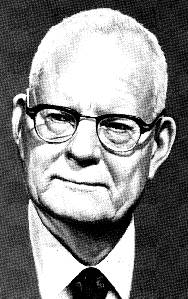Continuous improvement

 Continuous improvement or Kaizen was developed in Japan, although advancing ideas first proposed by Dr W. Edwards Deming in the USA in the years following the Second World War.
Continuous improvement or Kaizen was developed in Japan, although advancing ideas first proposed by Dr W. Edwards Deming in the USA in the years following the Second World War.
It involves forming small groups of staff with the target of identifying changes and improvements to products, procedures and methods. The aim is a steady flow of small changes rather than a few (perhaps traumatic) large changes. Remember, people tend to resist change, especially if the process is perceived as an excuse for cutting jobs.

We have learned to live in a world of mistakes and defective products as if they were necessary to life. ...
Deming
Employees at firms such as Toyota generate thousands of ideas a year - each aimed at improving quality or quality. Over time, these small (incremental) steps forward generate significant improvements in competitiveness, at a relatively low cost.
The Kaizen Institute says that employees should have two jobs: 'doing their job and then looking for ways of improving it'. The production line worker is at the centre of quality improvements as employees are a key resource. Individuals and teams are empowered and given the right to make decisions affecting the quality of their working lives. However, teams and individuals are set performance targets.
Kaizen groups are not the same as quality circles. Kaizen groups are wider than the old quality circles. They are also better empowered; they can put their improvements into action (this carries with it responsibility, however).
Implementation of Kaizen requires training of employees and often a change in culture of both managers and employees
Quality circles
Quality is maintained and improved by the working of quality circles and Kaizen groups.

Quality circles
A quality circle is a multidisciplinary team which meets voluntarily, and on a regular basis, to examine products, processes or procedures with the objective of making recommendations for improvement to management. The group is usually made up from employees from the shop floor, led by a supervisor. Participants are trained in necessary leadership, problem-solving and decision-making skills. Operating quality circles requires trust between employer and employees, effective two-way communication and willingness for management to delegate responsibility.

Kaizen groups
A Kaizen group consists of employees who meet to discuss possible changes to their working practices and suggest improvements to the production process. Kaizen teams aim to make small improvements in quality, but on a continuous basis to make the process more efficient and simple with the objective of increasing customer satisfaction. The focus of the group is not necessarily on the reduction of costs although suggestions to make jobs easier, and designs simpler, may result in such savings. As with quality circles, Kaizen groups will normally be multidisciplinary.
The format for Kaizen can be individual, suggestion system, small group, or large group. At Toyota, it is usually a local improvement within a workstation or local area and involves a small group in improving their own work environment and productivity. This group is often guided through the kaizen process by a line supervisor; sometimes this is the line supervisor's key role. Kaizen on a broad, cross-departmental scale in firms, generates total quality management, and frees human efforts through improving productivity using machines and computing power.
